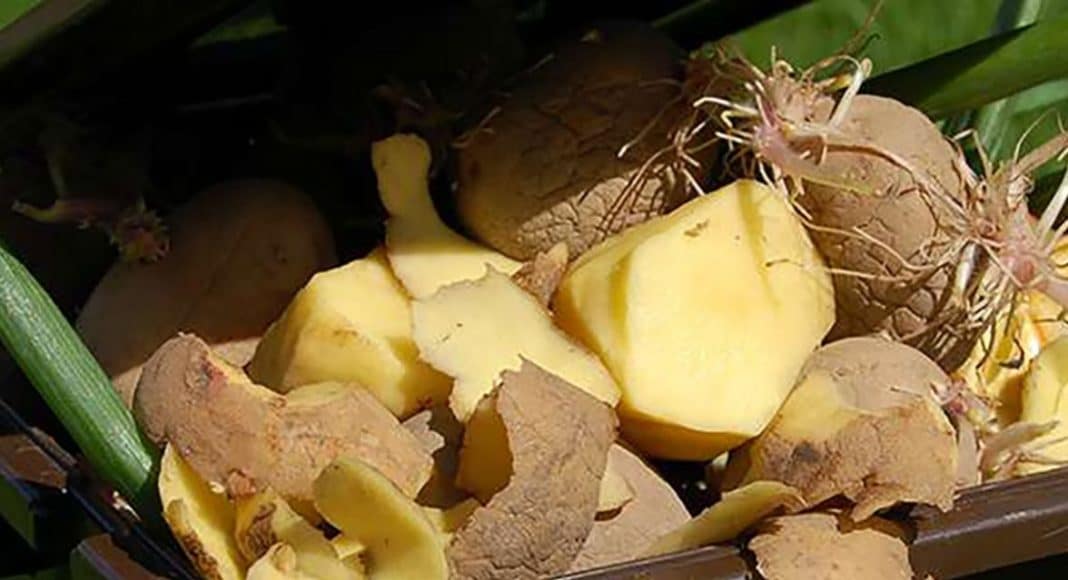On the way from field to fork, more than half of the potato harvest is lost. This is according to a new study conducted by researchers from Agroscope and ETH Zurich.
According to scientific surveys in Switzerland, 300 kilograms of perfectly good food ends up in the garbage per person each year. However, this number encompasses the entire shopping basket, from yogurt to drinkable leftover wine and two-day-old bread. The new study reported in the journal Waste Management identifies one product that is discarded disproportionately often: the potato.
The report breaks down the losses of this staple food along the entire supply chain. “With this study, we aim to deepen the discussion relating to food waste by looking at a single product,” says the report lead author Christian Willersinn.
Until now, precise figures on potato waste were only available from England, where around two thirds of potatoes end up in the trash. However, Willersinn says that these figures cannot be compared with the situation in Switzerland.
For the Swiss study, the researchers from Agroscope and ETH examined the losses that occur at the producer, wholesaler, retailer, processor and consumer level. The researchers recorded the quantities both of table potatoes and of processing potatoes, which are processed into french fries and potato chips. They also compared the losses that occur in organically and non-organically produced potatoes in both categories.
“Overall, potato waste is also very high in Switzerland,” says Willersinn in light of the results of his analyses. From the field to the home, 53 per cent of conventionally produced table potatoes are wasted, and this figure rises to 55 per cent for those produced organically.
For processing potatoes, the figures are lower: 41 per cent of organic potatoes are discarded, compared to 46 per cent of those from conventional production. The higher waste proportion for conventionally farmed processing potatoes is connected to the overproduction of this crop, which barely ever occurs with organic farming.
Losses occur at all stages of the supply chain: up to a quarter of the table potato harvest falls by the wayside even at the producer stage. A further 12 to 24 per cent are rejected by wholesalers during sorting. Just one to three per cent fall between the cracks at retailers, and a further 15 per cent are wasted in households.
Although private households account for a relatively small proportion of potato waste, Willersinn says their contribution has the most impact: in private homes, most of the unused potatoes end up in the bin bag or on the compost heap. Producers, traders and processors, on the other hand, recycle the vast majority of waste into animal fodder or, to a lesser extent, into feedstock for biogas plants.
According to Willersinn, the blame lies primarily with consumers’ high quality standards, especially when it comes to fresh potatoes. This accounts for two thirds of the waste in respect of fresh potatoes from conventional farming. For organic potatoes, this figure rises to three quarters.
Consumer health protection also leads to waste: producers reject one in three potatoes after harvest because they are rotten or green and could therefore be harmful to health. Misshapen or deformed potatoes, or tubers affected by pests such as wireworms are often rejected for aesthetic reasons and end up as animal feed.
In order to reduce potato waste, the researcher suggests taking action on the producer side first and foremost; for example, by using suitable cultivation methods such as crop rotation to minimize infestation, by protecting plants against wireworms, and by breeding new, more-robust varieties of potatoes.
Shrinking the mountain of waste would also require revised quality requirements, so that misshapen or scabby potatoes could make it onto the shelves. This could reduce losses of conventional fresh potatoes by four per cent and organic table potatoes by three per cent.
According to Willersinn, “Losses at the end of the chain are the worst because, at this stage, the most energy has been put into the product. The most sensible thing is therefore to minimize household waste.” Willersinn acknowledges “habits are very difficult to change,” noting that according to a household survey, older people throw out less than young people.
This study was carried out as part of the National Research Programme NRP69, “Healthy Nutrition and Sustainable Food Production”, funded by the Swiss National Science Foundation. It is the most extensive study ever produced in Switzerland on the topic of food waste in respect of a single product.
To learn more, visit phys.org.











